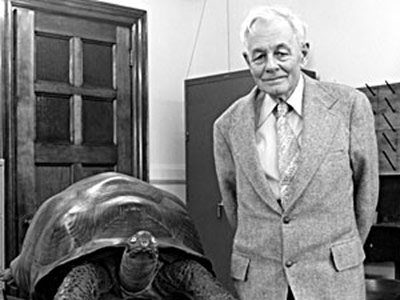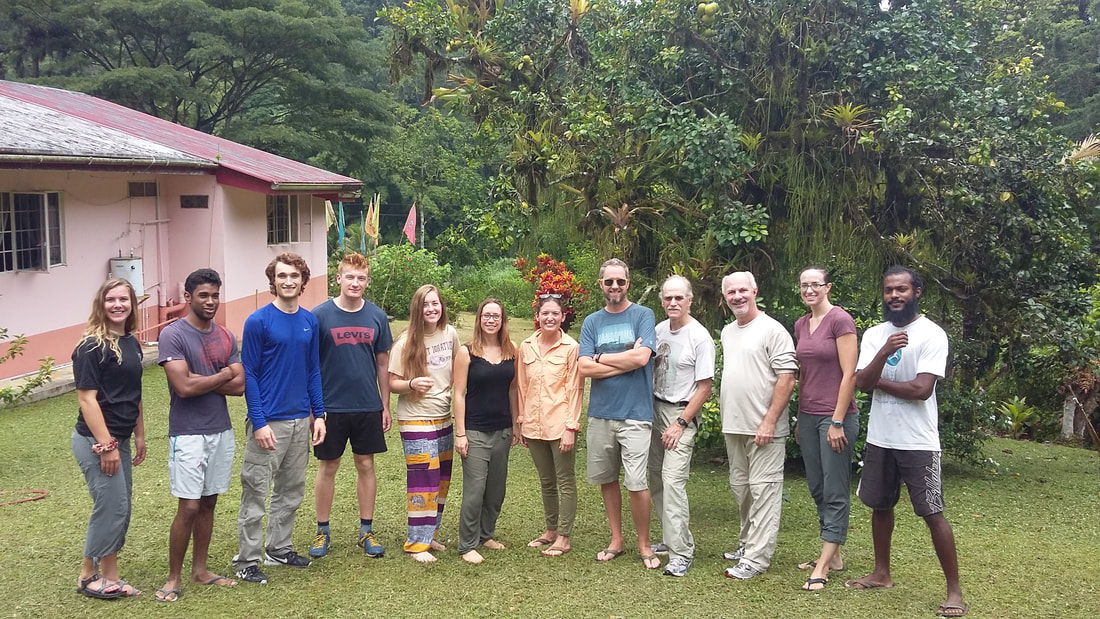Eco-Evo Dynamics
|
Gordon Orians coined the terms “functional ecology” and “evolutionary ecology” as subdisciplines of ecology in 1962 (Orians 1962). He did so at a time when the dominant question in ecology was “what factors determine the abundance and distribution of organisms?” Functional ecology follows Andrewartha and Birch’s earlier argument for how we should come to understand where animals are found and how abundant they are. To understand distribution and abundance, we must understand the physiology of the organism in question, the nature of its physical habitat, and the abundance of the organism in different types of habitats. The answer to this key question that defined ecology was thus seen as rooted in proximate factors. Orians proposed “evolutionary ecology” as an alternative perspective that discriminates between proximate and ultimate causes of abundance and distribution. The ultimate factor is evolution. If we are to understand the abundance and distribution of an organism today, then we have to see it as being the product of a history of adaptation to its surrounding environment.
|
Evolutionary ecology emerged in two different flavors. The first can be characterized by the title of G.E. Hutchinson’s famous essay: “The ecological theater and the evolutionary play” (1965) where he argued that the environment defines a template shaped by all of the organisms that interact with the organism in question. Evolution shapes an organism to best fit into that template. The associated theory models ecological interactions in a fashion that implicitly treats organisms as if they did not evolve because it treats them as constants. Evolution is seen as something that happened in the past. The justification for this perspective is that the pace of evolutionary change is assumed to be orders of magnitude slower than the pace of ecological interactions.
|
Hutchinson’s perspective was very much the same as that proposed by Darwin in ch. 3 of the Origin of Species, entitled, “The Struggle for Existence”. Darwin observed that all organisms have the capacity for exponential population growth, but this capacity was almost never realized. We instead most often see species abundances remaining within some relatively narrow range of values that is constrained by biotic interactions. There was thus a natural connection to be made between density dependent population regulation and evolution by natural selection; it was the ability of some phenotypes to be more successful in surviving and reproducing in the face of these interactions that caused evolution.
|
|
David Pimentel (1961, 1968) instead envisioned ecology and evolution as two actors that interact with one another during the course of a play. Pimentel’s concept of “population regulation and genetic feedback” thus emphasized an ongoing interaction between organisms involved in a diversity of pairwise exploitative interactions (predator-prey, host-parasitoid, host-pathogen, competitors, plant-herbivore). He envisioned each species involved in such an interaction as evolving in a fashion that would result in the dampening of population cycles and an approach to the relative stability of organismal abundances. He argued for frequency dependent and density dependent selection as the mechanisms that underlie these interactions and the approach to population stability. Implicit in his argument is the expectation that evolution can happen on a time frame that is similar to ecological interactions.
|
"Density influences selection; selection influences genetic make-up; and in turn, genetic make-up influences density. The actions and reactions of the interacting populations in the food chain cycling in this mechanism result in the evolution and regulation of animal populations." |
At this juncture, it is fair to ask what difference it makes to adopt Hutchinson’s vs. Pimentel’s perspective? The answer, as has been shown in some experiments and in theory, is that the outcome of ecological interactions can be radically different if the interacting organisms can evolve during the course of those interactions.
Hutchinson’s and Pimentel’s perspectives were each defined by emergent theory and the development of empirical approaches to test theory in the lab and nature. Hutchinson’s perspective blossomed into what we now refer to as evolutionary ecology and grew to dominate the field. Pimentel’s perspective languished, but is now re-emerging in the form of new types of theory and associated experiments. There are important distinctions between the two. The theory and a small body of empirical evidence associated with Pimentel’s perspective bear out Pimentel’s original claim - if evolution is indeed a part of ongoing ecological interactions, then the outcome of those interactions can be fundamentally different from what is predicted from theory that does not formally incorporate evolution. If Pimentel is right and if we can succeed in fully integrating ecology and evolution, then there is the promise that we can improve the predictive quality of ecology.
|
My multi-investigator project on the interaction between ecology and evolution in natural populations is designed to evaluate the possible role of such interactions in natural ecosystems. Our project represents a partnership of ecosystems ecologists, evolutionary/population biologists and evolutionary theoreticians. The project is built around the experimental introduction of guppies into four focal streams, short-term factorial experiments in artificial streams and complementary comparative studies done in natural streams.
|
Monitoring water chemistry, Ramdeen Stream, Trinidad



